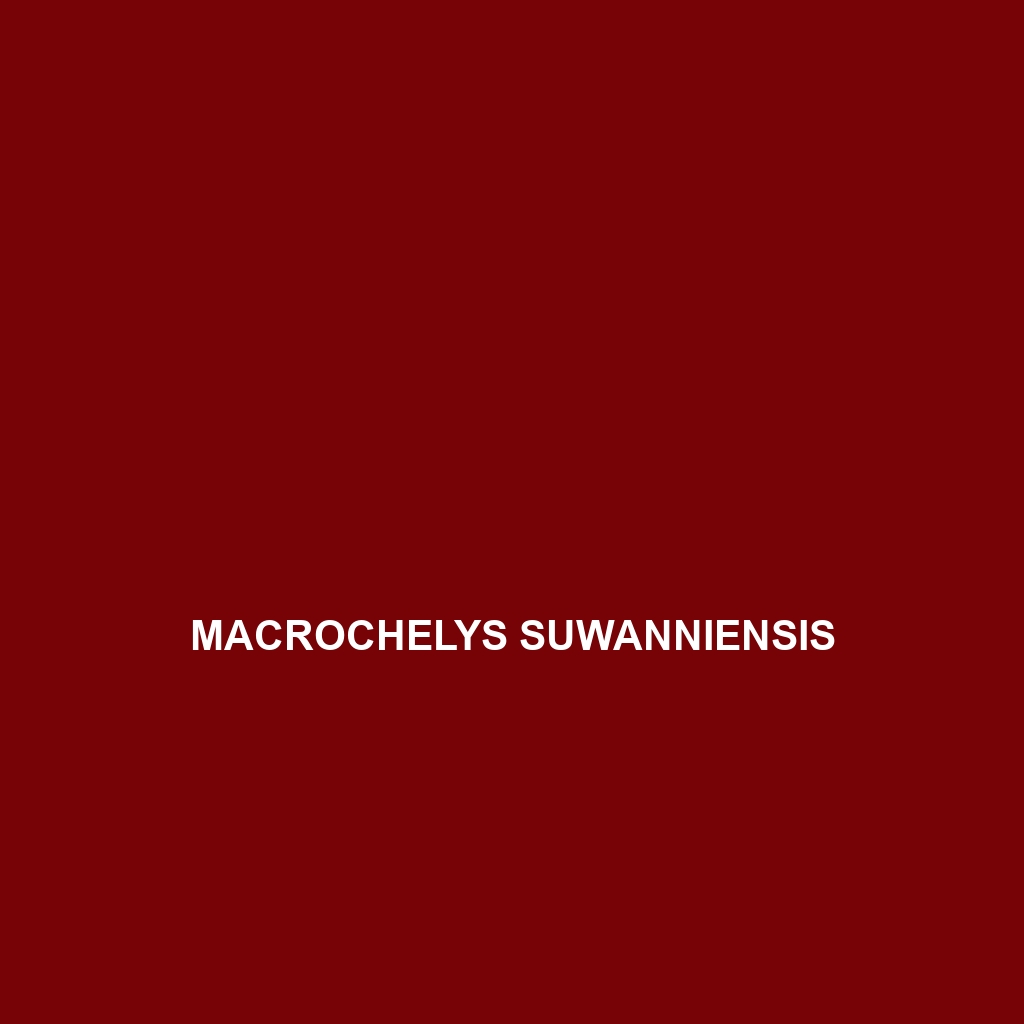Common Name
Macrochelys suwanniensis
Scientific Name
Macrochelys suwanniensis
Habitat
Macrochelys suwanniensis, commonly known as the Suwannee alligator snapping turtle, primarily inhabits the freshwater rivers and swamps of the southeastern United States. This species is predominantly found in the Suwannee River basin of Florida and Georgia, where it thrives in warm, slow-moving freshwater environments. The ideal habitat consists of a mixture of flowing channels, pools, and diverse aquatic vegetation. These turtles favor areas with ample submerged logs, stumps, and other natural debris, as they provide necessary cover and nesting sites. The local climate, characterized by humid subtropical conditions, supports a rich biodiversity, making it a prime location for the Suwannee alligator snapping turtle. Rainforests, savannas, and temperate forests surrounding these habitats contribute to the ecological balance, ensuring ample food resources and a stable environment.
Physical Characteristics
The Macrochelys suwanniensis is a remarkable turtle, known for its impressive size and unique features. Adult specimens can reach lengths of up to 26 inches (66 cm) and can weigh between 150 to 200 pounds (68 to 91 kg), making them one of the largest freshwater turtles in North America. Their shells, or carapaces, are distinctively heavy and can display a dark brown or olive color with a rough texture. One of the most notable characteristics is their three prominent ridges that extend along the carapace, giving it a prehistoric appearance. Additionally, these turtles have a large, broad head equipped with strong jaws, which are ideal for snapping prey. Their skin is grayish-green, with a texture that blends well into their surroundings, providing excellent camouflage against predators.
Behavior
The Macrochelys suwanniensis exhibits fascinating behaviors that contribute to its survival. These turtles are primarily nocturnal, becoming more active during the night to hunt and explore their surroundings. They are robust swimmers but often rely on ambush tactics to capture prey, remaining motionless until an unsuspecting animal approaches. Social interactions among individuals are minimal; however, during the mating season, males exhibit competitive behavior, often engaging in displays of strength to attract females. Mating occurs in the water, followed by the establishment of nesting sites on land, where females lay their eggs.
Diet
The diet of Macrochelys suwanniensis is primarily carnivorous, consisting of a variety of prey that includes fish, crustaceans, and other aquatic invertebrates. They utilize their powerful jaws to capture and consume prey, playing a vital role as predators within their ecosystem. While juveniles may occasionally feed on plant material, adults predominantly focus on animal-based foods, making them efficient carnivores. Their feeding patterns reflect their opportunistic nature, as they will take advantage of whatever food sources are abundant in their habitat.
Reproduction
The reproductive cycle of Macrochelys suwanniensis is typically seasonal, occurring during the warmer months, between late spring and early summer. After mating, females will seek suitable nesting sites on sandy riverbanks to lay their eggs. A clutch can contain anywhere from 10 to 50 eggs, which the female buries in the sand. The eggs incubate for approximately 100 to 120 days before hatching, usually between late summer and early autumn. Hatchlings are independent upon emerging from their eggs, and they exhibit innate behaviors to seek out water and avoid potential predators.
Conservation Status
The Macrochelys suwanniensis is currently classified as vulnerable on the International Union for Conservation of Nature (IUCN) Red List. The primary threats to this species include habitat destruction, pollution, and illegal harvesting for the pet trade. Conservation efforts are underway, focusing on habitat preservation and public education about the ecological importance of the Suwannee alligator snapping turtle. Organizations are also working to enforce legal protections, advocating for sustainable practices in the areas that comprise their natural habitats.
Interesting Facts
One of the most intriguing aspects of Macrochelys suwanniensis is its unique hunting mechanism. This turtle has a specialized tongue that resembles a worm, which it uses as a lure to attract fish. By wiggling its tongue, the turtle can entice prey, making it an effective hunter despite being a relatively slow mover. Additionally, these turtles can live for over 100 years in the wild, highlighting their longevity and evolutionary adaptations.
Role in Ecosystem
The ecological role of Macrochelys suwanniensis is significant within its habitat. As a top predator, it helps maintain the balance of aquatic ecosystems by controlling the populations of various fish and invertebrate species. This predatory behavior aids in the health of riverine systems, promoting biodiversity and ensuring the stability of food webs. Moreover, through their nesting activities, these turtles contribute to soil aeration, influencing vegetation growth and providing essential nutrients to their environments. Their presence signifies the health of freshwater ecosystems, acting as a key indicator species for conservation efforts.
